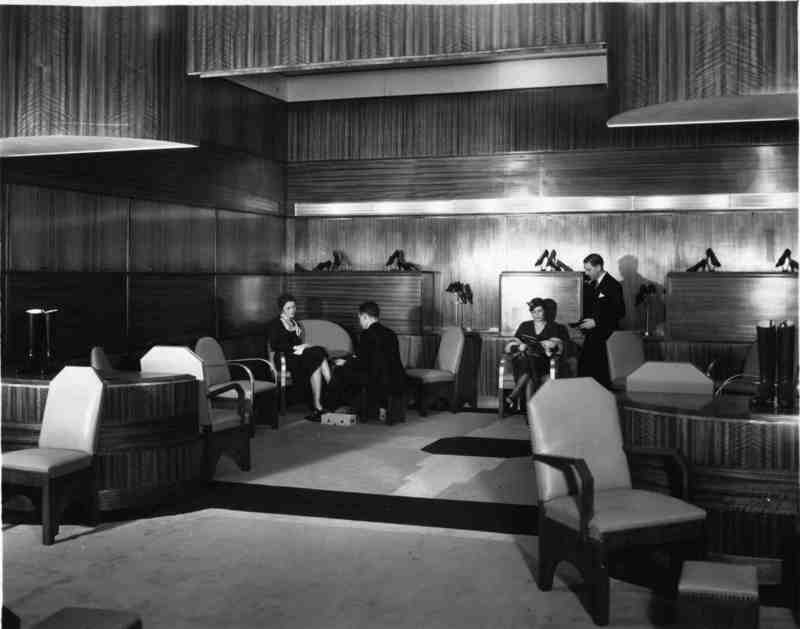The May Company

The new May Company department store opened on Public Square in 1915. Containing over 800,000 square feet of floor space, it was said to be the third largest store in the nation. Built by world-famous architect and city planner Daniel Burnham (who also designed Cleveland's Group Plan and Mall, as well as the White City at Chicago's 1893 World's Fair), it reflects the architectural values of the City Beautiful movement popularized by Burnham. Its gleaming white terra-cotta facade, clean lines, and symmetrical detailing gives the building a dignified and elegant look. Unlike many of the classically-influenced City Beautiful type buildings, however, its durable steel and concrete frame allowed for the generous inclusion of wide "Chicago style" (tripartite) windows facing Public Square. But what really excited the public about the new May Company were the luxurious shopping areas that could be found behind its front doors.
Shoppers could expect to find everything they needed at the May Company. Clothing, housewares, furniture: it was all there, spread across dozens of departments. In addition, the building contained the city's largest soda fountain, an auditorium for cooking and fashion demonstrations, a hair salon (including a "children's barber shop"), a "children's playground" staffed by a storytelling governess where mothers could drop off their children while shopping, and 23 passenger elevators. More than 2,500 employees worked at the store, including a trained nurse at the baby department who advised "mothers as to the proper dressing and care for infants," as well as "nine young women, conversant with ten languages" who made up the "foreign department," where non-English-speaking patrons could find help.
The May Company, founded in Denver in 1888, first opened in Cleveland in 1899 after purchasing the E.R. Hull & Dutton Company's store on Ontario Street near Public Square. Burnham's 1915 building underwent expansion in 1931 that saw the addition of two floors, increasing the sales area to more than one million square feet. In the 1950s, the May Company began an expansion into the suburbs, following the population's movement away from the city. By 1979, it had nine branches throughout Northern Ohio. Shifting population and spending patterns eventually forced the May Company and other Cleveland department stores to curtail their downtown businesses, leading to their closures in the 1980s and 1990s. The May Company's downtown store ultimately closed in January 1993, and its remaining stores were rebranded Kaufmann's, at the time a May-owned department store with Pittsburgh roots.
The bulk of the building lay vacant for many years after the store closed. Many of the interior architecture was lost when the building was gutted in anticipation of being turned into a parking garage to support the nearby casino in the former Higbee's department store building. The street level facing Euclid Avenue became home to the Cuyahoga Community College School of Hospitality Management and two restaurants. The remainder more recently underwent renovation to become apartments in 2020.
Images











